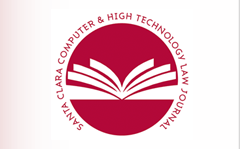Home > Journals > High Tech > Vol. 40 (2024) > Iss. 1 (2024)
Abstract
The concept of using non-fungible tokens (NFTs) to facilitate and authenticate sales of digital art dates back to 2014; but it took several years before the concept really captured public attention. Since copyright law governs the reproduction of works of art, including digital images, the connection to NFTs seems obvious. Yet, copyright law is only tangentially related to NFTs, for two reasons. First, buying an NFT does not, by itself, convey any rights to reproduce or display the work associated with that token. Instead, those rights are governed entirely by the contract that accompanies the sale. Second, minting and selling an NFT, by itself, likely does not violate any of the exclusive rights provided by copyright. As a result, although copyright may provide a useful tool for artists seeking to monetize their art, it is probable that its usefulness will be limited in lawsuits concerning NFTs. Ultimately, other legal tools (such as trademark law) may provide better relief when litigation concerning NFTs becomes necessary.
Recommended Citation
Ochoa, Tyler T.,
NON-FUNGIBLE TOKENS (NFTS) AND COPYRIGHT LAW,
40 Santa Clara High Tech. L.J. 1
(2024).
Available at: https://digitalcommons.law.scu.edu/chtlj/vol40/iss1/1
